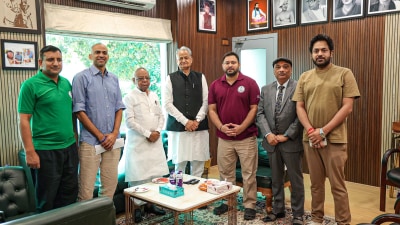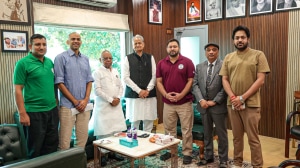INTACHs stitch in time
"To preserve your brocades and silk-saris,avoid naphthalene balls -- they give out a noxious gas. Use dried neem leaves instead," says Smita Singh....
“To preserve your brocades and silk-saris,avoid naphthalene balls — they give out a noxious gas. Use dried neem leaves instead,” says Smita Singh,senior conservator of the India Council of Conservation Institutes (ICCI),at the the spanking new wing of the INTACH office on Lodhi Road. For the first time in the history of museum studies and conservation,INTACH will dedicate a whole wing to the task of reviving and restoring some of the great textiles of India at their Specialised Textile Conservation Unit (STCU).
“We have a hoary tradition of textiles in India from Lucknow’s Chikan to Bengal’s Kantha,from Punjab’s Phulkari to Kashmir’s Pashmina,but somehow the awareness about conservation and restoration of textiles is lesser than it is for painting. Which is why we at ICCI want to change that with outreach and actual restoration work,” says Dr O P Aggarwal,ICCI director general.
Equipped with an array of specialised gear — infrared and ultraviolet light,magnifying glasses that bring into focus the tiniest detail,surgical needles that can sow the finest silk,pipettes to measure dyes,and even a Nebulizer — Singh demonstrates how the weathered Thangka painting is cleaned and revived to some of its original glory.
“We prepare an entire assessment report before we begin to restore a work. This includes data invisible to the naked eye that will help us take important decisions about the work,” says Singh. “For example,if the work has been painted or stitched with a dye that runs,we must be careful not to wet the painting while restoring it. We are also looking for dyes that are not sulfur-based since sulfur emits a gas that ages the material.”
The Nebulizer,usually used for asthma patients,is innovatively used in this instance to spray a fine mist of adhesive onto the restored painting to consolidate the colours. Singh says silks should not be displayed without a padded hanger and the display cabinets should not be padded with foam since that too releases a noxious gas. Pashmina should not be sunned for a whole day since ultraviolet rays will bleach the delicate threads of silk and wool and de-colourise the garment.
These are just some of the tips that one can pick up by just visiting the STCU. For a more serious talk on conservation of India’s textiles,one can always attend one of the intensive workshops that will be held by Aggarwal and Singh as part of their awareness and training programmes. “Since we have a no-profit-no-loss policy at INTACH,we will be taking up private work to generate funds for the smooth running of the department but our work with museums across the country will continue,” says Aggarwal.






- 01
- 02
- 03
- 04
- 05

























